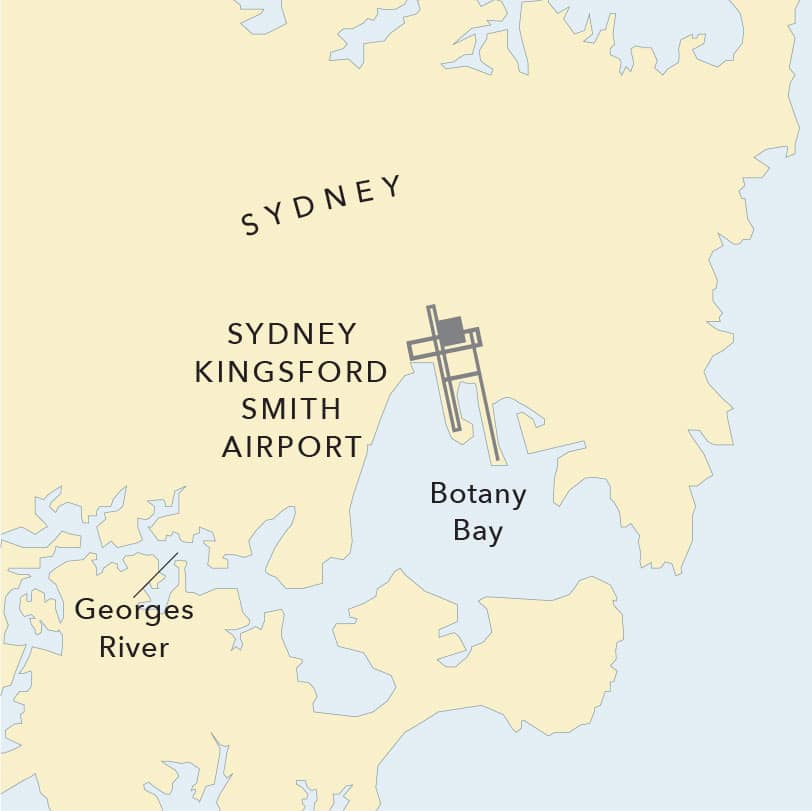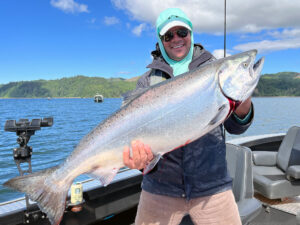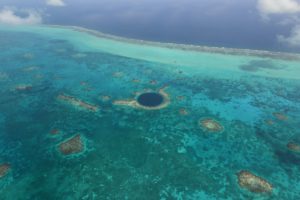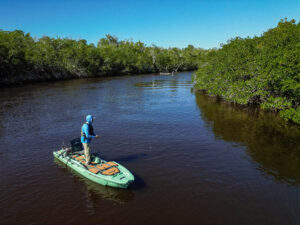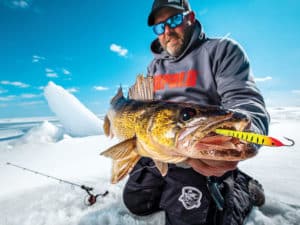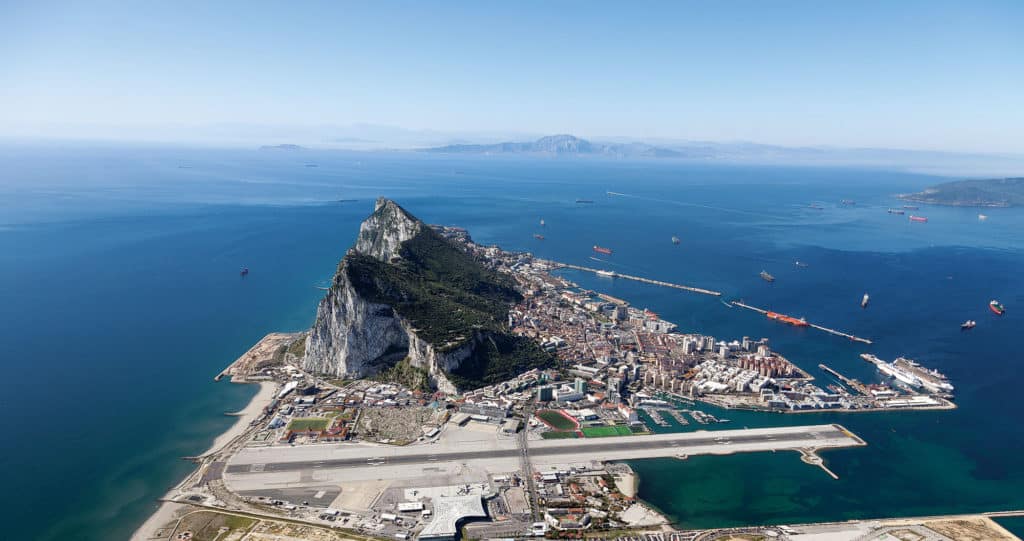
It’s not unusual for large airports to be situated at water’s edge. After all, jetliners coming in low on flight paths over an ocean or bay don’t have to worry about noise restrictions for urban residents. They might disturb anglers in boats beneath them, but, hey, if there’s a good runway bite going, I’d say most fishermen won’t complain. And there are places and times where that good runway bite happens a lot. I suspect most readers who’ve flown into coastal airports over water (and had a window seat) have looked down on approach, noting small boaters drifting or trolling, and wondered. Of course not all coastal airports attract anglers, but some offer consistently good fishing. Here are six major airports around the world that do just that, along with a bit of expert advice about fishing them (and in some cases, staying out of trouble!).
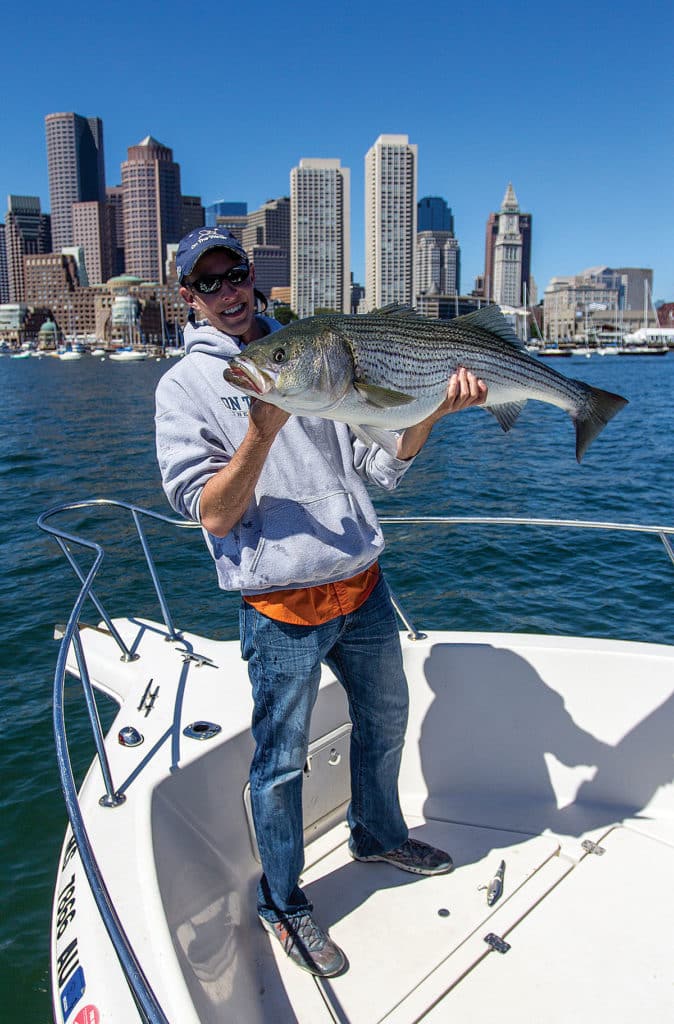
Boston
Logan International Airport
Boston’s Logan International comes in at somewhere between 16th and 19th (depending on the source) among the top 20 busiest airports in the United States. The airport authority cites 1,700 acres of area in East Boston supporting six runways and four passenger terminals which, in 2016, served nearly 28 million passengers. But Logan is credited with operating from one of the smallest footprints among those 20 airports. Or put another way, it’s tucked in mighty tight. Expansion would be problematic because it’s surrounded on three sides by Boston Harbor, so the fact that it’s a favorite fishing spot for many anglers isn’t so surprising.
In the shallow flats and deeper holes on the south side of Logan, stripers and bluefish take up residence, as in spring and early summer do flounder, says Capt. Chuck DiStefano, one of the city’s best-known veteran charter skippers. Ditto, DiStefano says, for a tidal, riverlike waterway just east of the airport that opens into a larger bay.
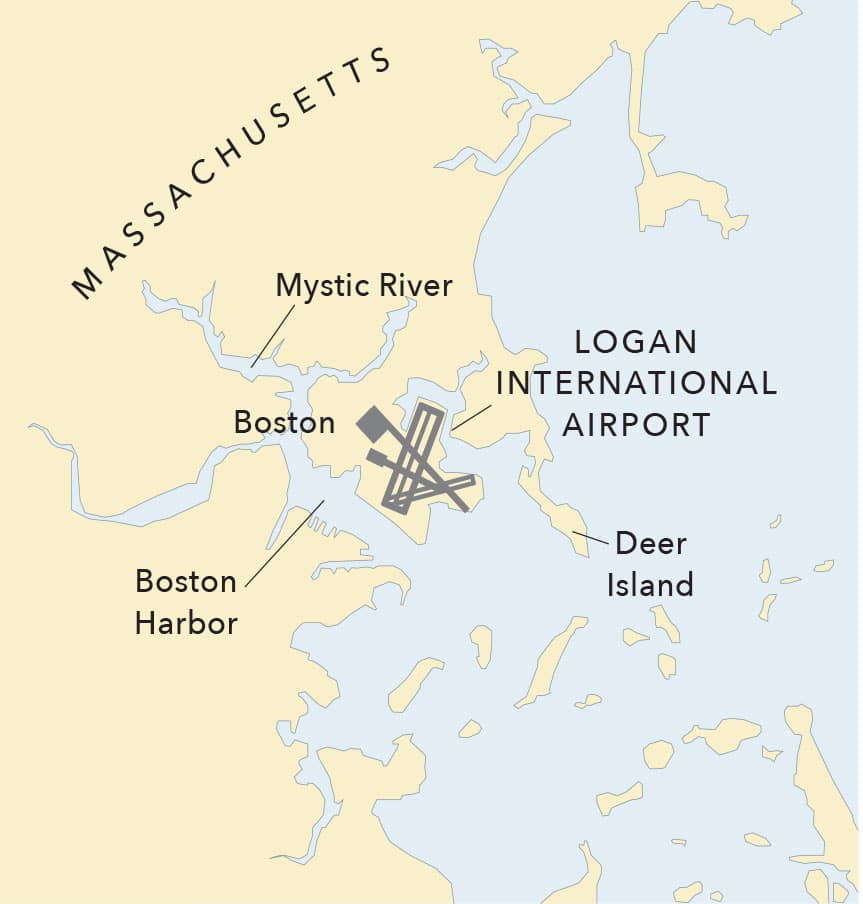
On any given day, private and charter boats are likely to be fishing in these waters. Security is not a major issue, with white buoys clearly marking the airport’s security zone. “Sometimes feeding fish will get right up against the shore, and I have seen boats fishing inside the buoys,” DiStefano acknowledges. He says if airport security sees that, a state police boat will be sent out. “The cops will move you back out, and threaten you not to do it again, but I’ve never heard of anglers being fined for wandering into the security zone.”
DiStefano also cautions to be wary of the very heavy boat traffic in the main shipping channel that runs along the southwest side of the airport.
Contact captains Chuck and Skip DiStefano at Boston Sportfishing (bostonsportfishing.com). They fish year-round, not only for inshore game fish in Boston Harbor, but also offshore seasonally for bluefin tuna and bottomfish.
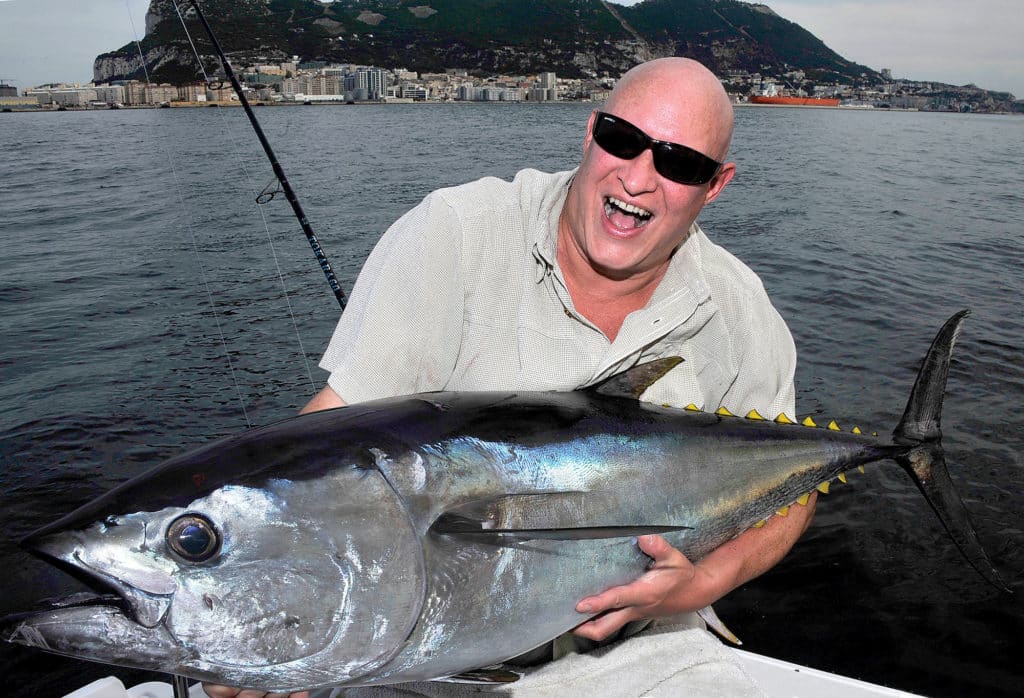
Gibraltar
Gibraltar International Airport
Gibraltar rates fifth in a list of the world’s most dramatic runways (CNN, 2017). An aerial photo shows why. There’s nothing below an airliner but water until just about the instant it touches down next to the famed Rock of Gibraltar. Crosswinds on the open runway are often strong, and space is so limited on the 2.4-square-mile speck of land in the Mediterranean that the little British territory’s main highway is bisected by the runway — so when a plane is coming in, cars are held back, much as at a railway crossing. Basically, south of the runway is the tiny British territory, and to the north begins the entire country of Spain.
How close to the runway do anglers fish for bluefin tuna? “We fished pretty much right under planes landing and taking off!” marvels globe-trotting fishing photojournalist Johnny Jensen (jjphoto.org) from Denmark. Jensen has fished tuna around Gibraltar once or twice a year since 2009 (landing bluefin in excess of 500 pounds). In fact, tuna anglers are limited to fishing within 5 miles of “the rock” by law unless they have permits to fish in Spanish waters. Jensen, a Sport Fishing contributor, says most years bluefin can be taken trolling on the ocean side of the rock and in the mouth of the Bay of Gibraltar from about mid-June to mid-August; in fall, smaller tuna can be caught on poppers in the bay itself.
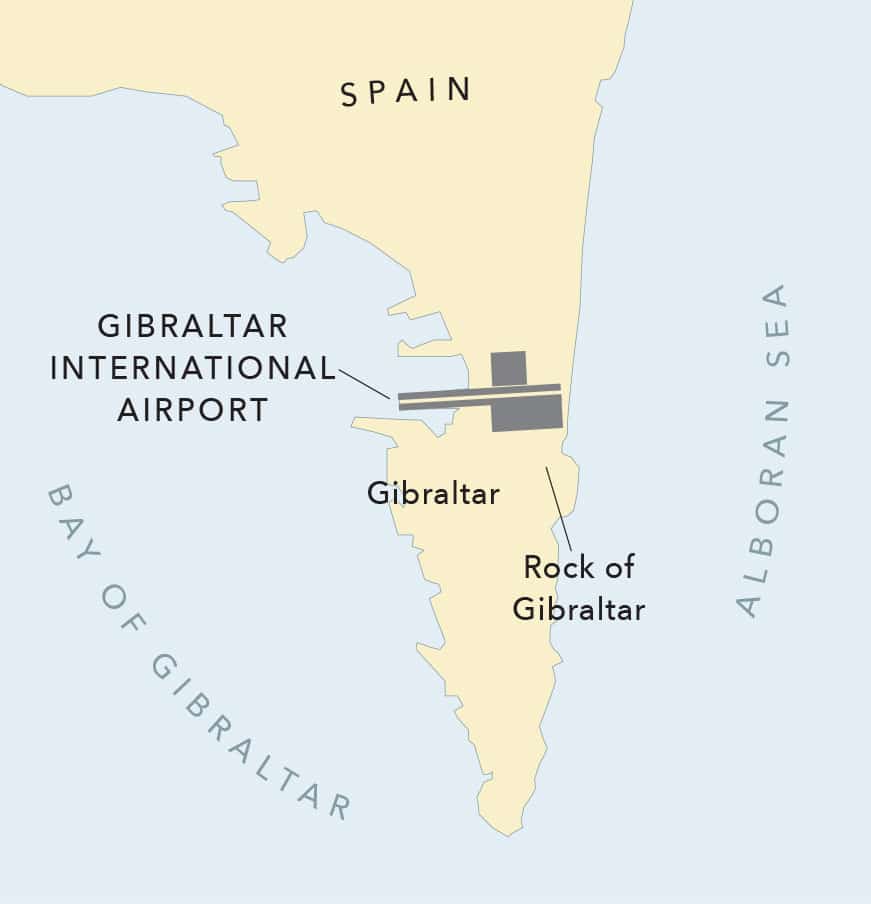
In addition to bluefin, these productive waters offer anglers year-round action from large congers, various species of sea breams, including dentex (a large, prized porgy that can exceed 30 pounds), mackerel, bonito, sea basses and more.
Jensen says security is not a major issue here, and “there’s really not a problem fishing near the airport.”
To book a trip, check with any of the several skippers who operate Big Game Fishing Gibraltar (biggamefishinggibraltar.com).
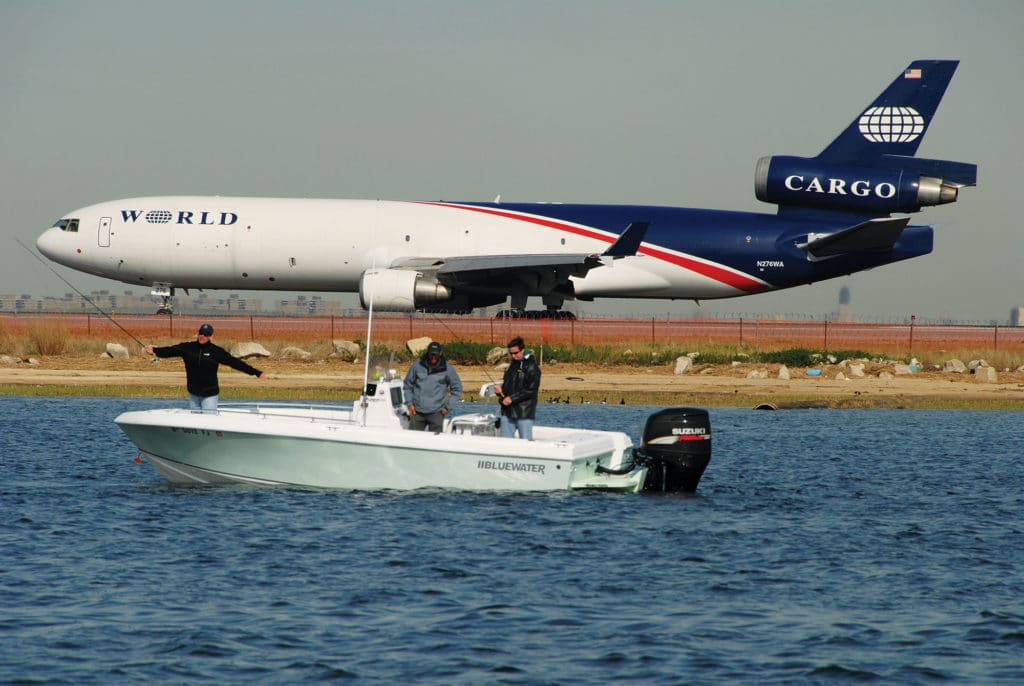
New York
JFK International Airport
If you like the sound of jet engines, JFK is a great place to fish: It’s the fifth or sixth busiest airport in the United States, as the Big Apple’s major airport and the busiest international air gateway into North America. Nearly 60 million passengers flew in or out of JFK in 2017. Located in the Queens neighborhood of Jamaica (about 15 miles of midtown Manhattan), the airport occupies about 5,000 acres.
The southern half of JFK is bordered by Jamaica Bay, which Capt. John McMurray says is an amazingly productive estuary. “It’s something of an ‘artificial estuary’ without a major freshwater influx, but two sewage-treatment plants pump out a combined 120 gallons of treated, nutrient-rich fresh water daily,” he says. Spring and fall it attracts tiny organisms, then menhaden and other baitfish, which explains the outstanding action for stripers and bluefish.
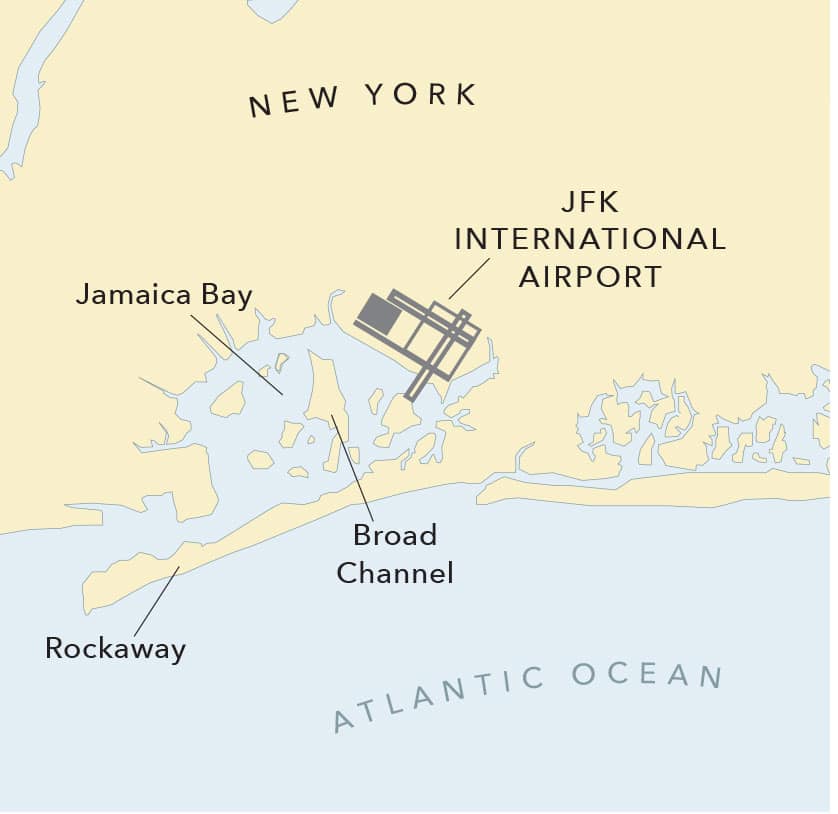
McMurray has fished the mud flats here, adjacent to deeper water, in spring and often in fall for 20 years. (I can attest to the fabulous action for big blues, sight-casting poppers, as will be evident in my feature coming up in the May 2019 issue of Sport Fishing.) The deep holes, created during dredging for fill to build the airport in the 1940s, offer big bass and blues a good place to hang and, for anglers, a good bet at times.
Some of the outstanding fishing is simply off-limits, McMurray says. “The Port Authority is quite clear that no one is allowed within 100 yards of the airport, and there are white buoys denoting that line. Disregard it and you might get only a warning, but you’re just as likely to come away with a fine.” Surprisingly, while the waters right near JFK have dedicated fans among anglers, McMurray says they’re overlooked by or not well-known to many.
To fish Jamaica Bay around JFK Airport or elsewhere (or tuna offshore), contact McMurray at One More Cast Light-Tackle Charters (nycflyfishing.com).
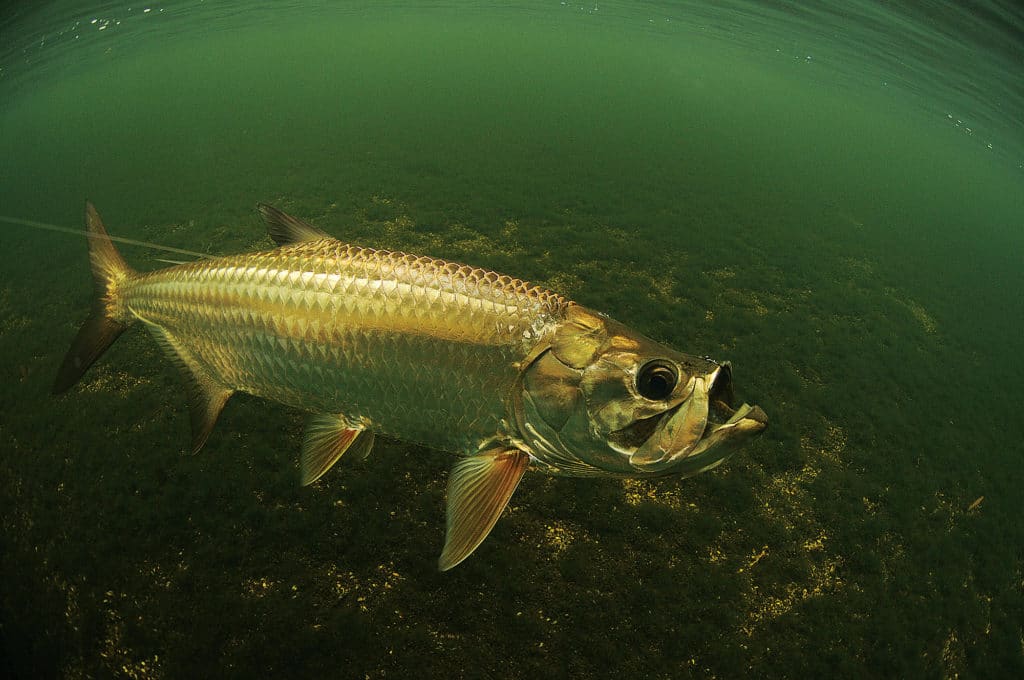
San Juan, Puerto Rico
San Juan Luis Muñoz Marín International Airport
The busiest airport in the Caribbean is located 3 miles southeast of San Juan city.
The main runway ends abruptly at the very edge of La Torrecilla Lagoon to the east; to the west, just past the end of the runway, is San Jose Lagoon. Atlantic beaches are immediately north of the airport.
I can vouch for the proximity of the airport to the fishing grounds, recalling many times while fishing there when we’d have to pause in conversing during the low approach of jetliners, which looked enormous as they passed just over our heads.
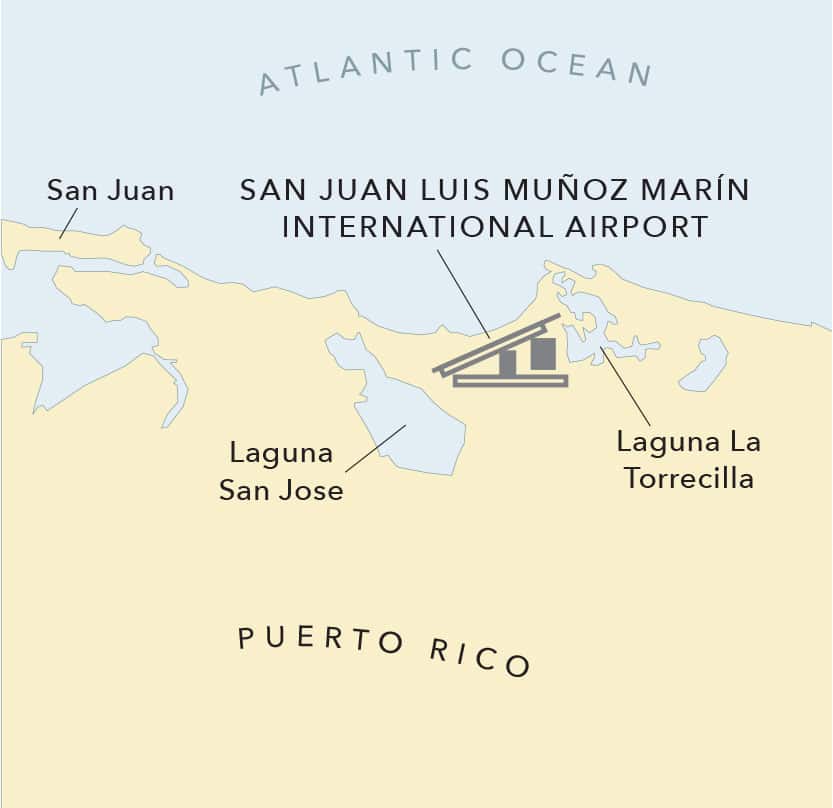
“These lagoons, so close to the airport, are extremely productive year-round for tarpon from babies to 50 pounds,” says Capt. Juan Carlos Torruella, whose best one-day total saw his anglers releasing 56 tarpon. Much-larger tarpon move into San Jose Lagoon March through May and in October; May through August are the best months in La Torrecilla Lagoon.
“Our lagoons have been recognized internationally as some of the best tarpon grounds in the world,” Torruella points out.
A frequent and welcome bycatch species is snook, says Torruella, who’s been guiding in these waters for more than two decades.
Security is not a major concern of airport personnel, hence not of anglers who fish the lagoons, doing so with few of the restrictions some international airports impose. Torruella can be contacted via his Extreme Fishing Puerto Rico website, extremefishingpr.com.
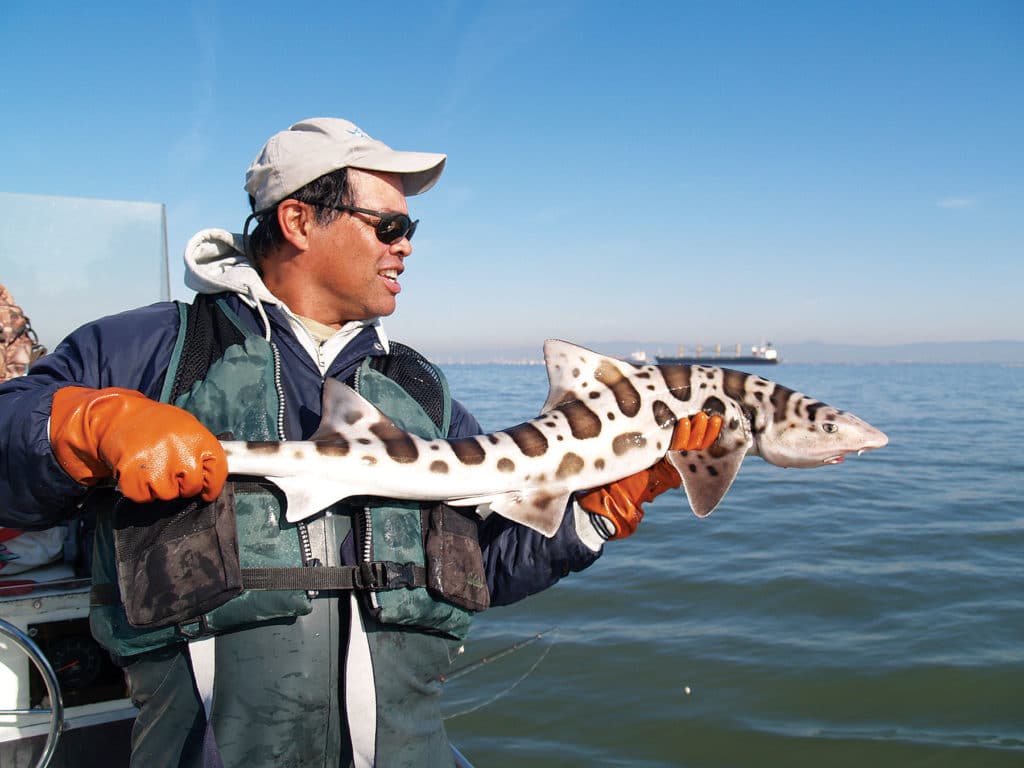
San Francisco
San Francisco International Airport
Although this seventh-busiest airport in the United States is owned by the city, it’s located in San Mateo County, 13 miles south of downtown. The airport, which occupies more than 4,930 acres (essentially the same size as JFK), saw nearly 56 million passengers served in 2017. It’s entire western length abuts South San Francisco Bay.
Capt. Don Franklin, who has fished the area professionally since 2001, cites the airport’s proximity to historically productive spots, particularly such popular areas as San Bruno Shoal just to the east, and Candlestick Flats and Oyster Point, a stone’s throw north. Primary targets in the recreational fishery: striped bass, halibut, leopard sharks and sturgeon. Aside from typical afternoon breezes, this side of the South Bay generally enjoys good conditions for small boaters (unlike more-exposed or current-swept waters to the north). Franklin describes this as a year-round fishery, though particularly spring for early-season halibut and bass. He favors fall, when herring spawn, for targeting sharks and sturgeon (the latter fishery improves into the winter months). For local enthusiast and fish blogger Steve Wozniak, it’s especially a warm-weather thing: “Summertime sees great bites on salmon, stripers, halibut and rock cod,” he says.
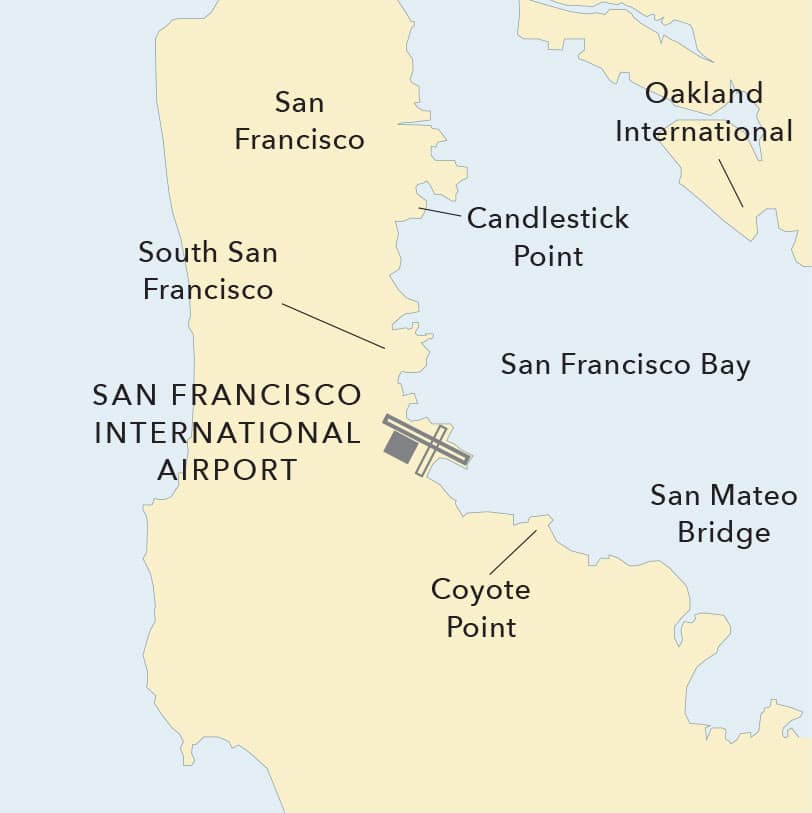
As for security, Franklin says, “they do have a perimeter around the airport, and the Coast Guard enforces it,” but he believes it’s more for safety than security concerns. He cites one time he did fish just inside that perimeter and was asked to move out — but understandably, because it turned out that Air Force One planned to land shortly. Franklin can be contacted via solemanfishing.com. See Wozniak’s unique blogs at 1000fish.wordpress.com.
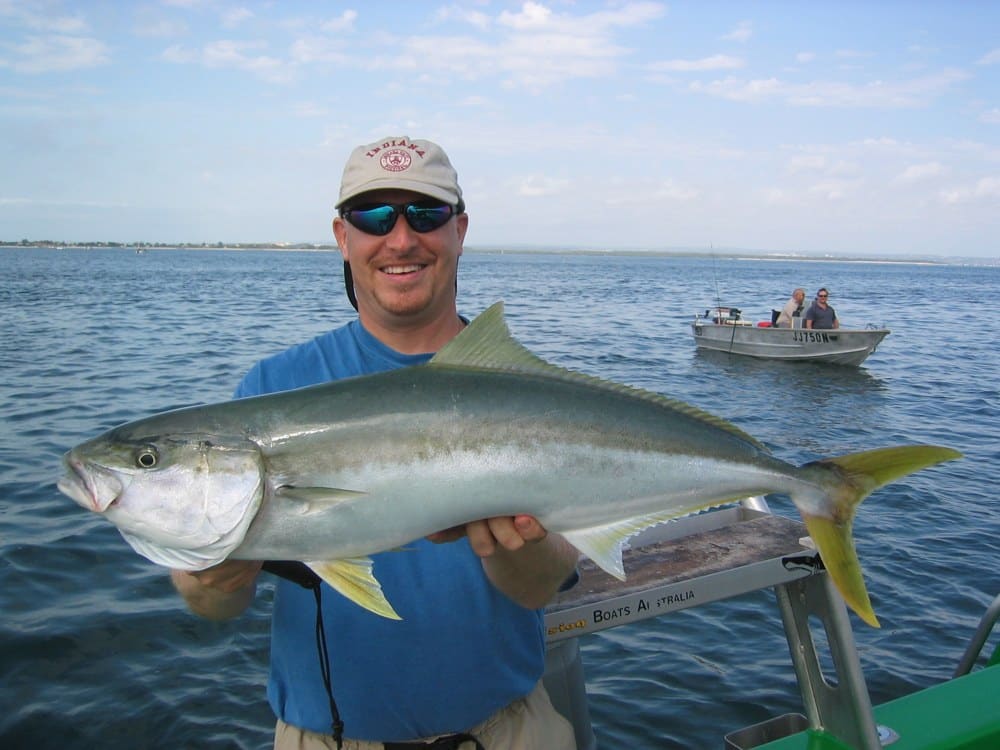
Sydney
Sydney Kingsford Smith Airport
Located about 5 miles south of the city center, the north-south runways of Sydney’s airport extend for most or all of their length into Botany Bay. Australia’s busiest airport handled nearly 43 million passengers in 2017.
While Botany Bay, in the shadow of Sydney, has a great deal of fine sport fishing (and has been a “Recreational Fishing Haven” since 2002, a government designation meaning all commercial fishing is banned), some of the very best spots are right along the airport’s runways. I fished there many, many years ago with Capt. Scott Lyons, who fishes the bay year-round (but more so in summer — December through February), and has for 20 years. He offers this rundown of fish targeted here: kingfish (aka southern yellowtail) and other trevallies, bream (a type of porgy), tailor (aka bluefish in the United States), flathead (think giant lizardfish) and Australian salmon.
Read Next: 11 of the World’s Best Fishing Spots
“Trevally are my bread-and-butter in the bay; right along the end of the runways is a prime location. I fish here often, as do many other anglers.” California globe-trotting angler Wozniak, who has fished around the world, including here on many occasions, reveals as one of the area’s best spots for popular flathead the end of one of the runways. Wozniak also cites “an amazing variety” in these waters for those fishing small soft plastics.
A series of yellow markers in the bay around runways designates a security zone. Boaters need to heed those markers, Lyons advises. He admits he has had “the odd run-in” with airport security over the years when “tailor and salmon were schooling really tight to the runway.”
Lyons suggests readers find him at facebook.com/thehookandthecook.
